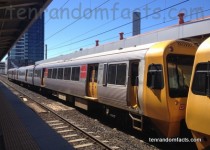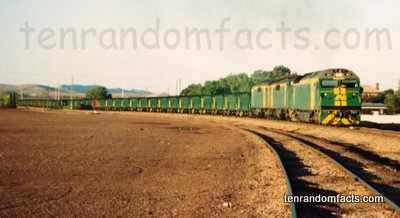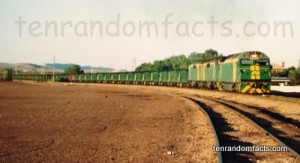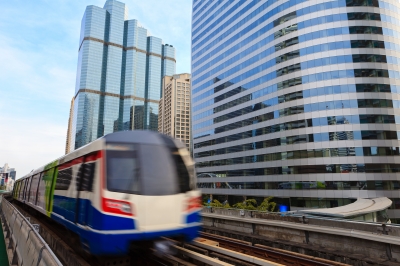
Do you prefer the slow or the fast trains?
- Trains are transportation vehicles that travel along rails and can transport large quantities of people or other objects, while the engine or powered part of the vehicle is generally known as a ‘locomotive’.
- Today, trains are typically moved via the use of diesel fuel or electric power; and other means, like magnetic levitation, are utilised in some circumstances, while steam, gravity and horse power were common past fuels.
- The term ‘train’ originates from the word ‘trahere’, a Latin word that means ‘to pull or draw’.
- Train cars or carriages containing luggage, cargo or people are typically pulled by a locomotive, or two or more, depending on the power required, or they can be self-powered.
- Trains are generally classified under short and long distance variants, the former often connecting city suburbs or other smaller cities, while the latter travels through many cities or far distances.
- Trains generally move along two parallel rails that are part of a railway track, although some use only one rail, such as monorails, while others use alternative technology.
- The invention of the train grew out of the creation of the earlier wagonways, and it was made more possible after the steam engine was built, although it was not until 1763, when Scottish engineer James Watt remodeled the original engine, did the power source become practical.
- Many high-speed trains can run at operational speeds of 350 km/hour (217 miles/hour), while the record for the fastest was set in 2007, by the French-owned TGV, and ran at 574.8 km/hour (357.2 miles/hour).
- The first steam locomotive was invented in 1804 in Britain by engineer Richard Trevithick, although it was not until Englishmen Matthew Murray and George Stephenson built on the ideas of Trevithick in 1812 and 1814 respectively, that trains became a feasible transport option.
- Specific trains are named primarily to increase their popularity, and a notable named train in history was the ‘Orient Express’, that ran in Europe from 1883 to 2009.
Bibliography:
Train, 2015, Wikipedia, http://en.wikipedia.org/wiki/Train
Train Invention – Who Invented Train?, n.d, Train History, http://www.trainhistory.net/train-invention/who-invented-train/
Who Invented The Train?, Who Invented It?, 2015, http://invention.yukozimo.com/who-invented-the-train/













